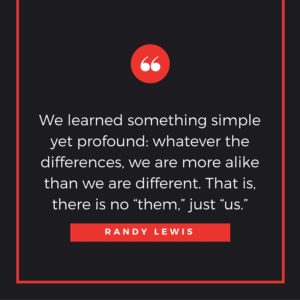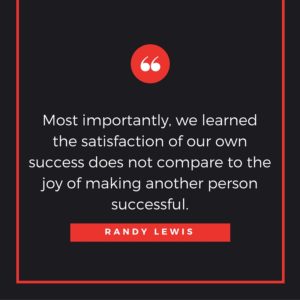My 27 year-old son, Austin, has autism. Like most parents with a child with a disability, we share the same wish: to live just one day longer than our child. What happens after we are gone? Can we ever earn and save enough to provide our child a fulfilling life of health and safety? Early on when we were dreaming of lifetime goals for Austin, a driver’s license would have been the equivalent of a PhD from MIT. A job that paid a living wage would have been a Nobel Prize.
That is what lead Walgreens to launch a disability hiring initiative that has resulted in 10 percent of the distribution centers’ workforce being people with disabilities (PWDs), including many with ASD. The centers now employ over 1,000 PWDs who earn the same pay, perform the same jobs and work side-by-side with typically-abled team members in a completely inclusive environment.
 We found that PWDs are just as productive as the typically-abled. Plus, they have fewer accidents and reduced workers comp costs. They have better employee retention and less absenteeism.
We found that PWDs are just as productive as the typically-abled. Plus, they have fewer accidents and reduced workers comp costs. They have better employee retention and less absenteeism.
We learned something simple yet profound: whatever the differences, we are more alike than we are different. That is, there is no “them,” just “us.” Conversely, there is a saying in the autism community that once you have seen one person with autism, you have seen one person with autism. We found the same holds true for all people, disabilities or not. This taught us to deal with each person as an individual and not to make assumptions about what someone can or cannot do, what they understand or how they approach the work.
Most importantly, we learned the satisfaction of our own success does not compare to the joy of making another person successful. No surprise that most managers now say their number one job is to make every employee successful, disability or not. The program has been embraced by team members and supervisors who say this has led to a work culture of teamwork and purpose. These lessons have extended beyond the workplace back in our everyday lives. Simply put, it has made us better – better co-workers, better managers, better spouses, better parents, better people.
Companies like Lowe’s, OfficeMax, Meijer, P&G, UPS have visited and are adapting the disability hiring model to their own businesses. They, in turn are mentoring other companies. Businesses large and small are starting to change long-held attitudes and opening their thinking to view PWDs as a valuable source of talent.
Employment opportunities for people with disabilities will improve although not as fast as we might like. However, I have never been more optimistic that change will come. The most important contributor to this is living and acting on the expectation that our children will be part of working society. To settle for anything less will condemn too many to a life of poverty and dependent on the charity of others.
We as parents, educators, businesses and the public sector need to be aligned with this expectation of employment as the norm for people with disabilities. There are many areas where we are not that need to be addressed. For instance, many high schools have specialized resources devoted to students getting in the right college. But when it comes to those with disabilities, there are no resources focused specifically on job skills, job placement, business partnerships, work study and internships. These are a huge opportunity for schools and colleges, especially community colleges, in bringing about positive change.
 As for employers, we need to come to understand that we have “invisible barriers” that are often difficult to scale when it comes to screening and hiring people with disabilities. For instance, PWDs are often automatically disqualified or do not fare as well compared to their typically-abled counterparts because of gaps in employment history. Our job descriptions may often include requirements that in practice are not key to the job (e.g., there may not be a job description in America that doesn’t include “good communication skills”) or a candidate with a disability may have difficulty in communications or look or act differently than we usually expect. As a result, we often inadvertently exclude those who can and want to perform the job but can’t get through the hiring process.
As for employers, we need to come to understand that we have “invisible barriers” that are often difficult to scale when it comes to screening and hiring people with disabilities. For instance, PWDs are often automatically disqualified or do not fare as well compared to their typically-abled counterparts because of gaps in employment history. Our job descriptions may often include requirements that in practice are not key to the job (e.g., there may not be a job description in America that doesn’t include “good communication skills”) or a candidate with a disability may have difficulty in communications or look or act differently than we usually expect. As a result, we often inadvertently exclude those who can and want to perform the job but can’t get through the hiring process.
The Walgreens model worked because we worked with provider partners who learned our jobs and sought out PWDs who were likely to be successful in performing them. As a result, rather than subjecting PWDs to our traditional hiring and selection processes, we hired them directly as paid interns until they were able to demonstrate sufficient on-the-job performance and became full-fledged employees. The provider community helped the transition by providing job coaches during the internship period so that we avoided claims that PWDs would require incremental training costs.
However, for those of us who have launched disability hiring initiatives, we agree that the most difficult task is deciding to do it, not how we go about it. There are plenty of examples of other businesses from which to draw experience of employing PWDs successfully. And there are plenty of resources, both public and private, to help them. My experience is that these are important to know once someone wants to hire people with disabilities. However, they are not in themselves very effective in convincing someone to do so.
As for promoting employment in our own communities, we need to “expose and “envision.” That is, we need to “expose” employers to the possibility that there is a group of people who would be great employees whom we are overlooking because of inadvertent and unintentional barriers embedded in current hiring practices that deny our businesses of otherwise successful and devoted employees and by doing so, needlessly condemns people who want to work and can do the work to a life of poverty at great cost to the community.
In addition, we need to help individual businesses “envision” how hiring people with disabilities will benefit them in achieving its business objectives while having huge positive impact on the world around. For instance, what would be the possibilities for our business if what we always assumed to be true about people with disabilities is not? What if there is indeed a large group of people on the outskirts of society whom we have never considered before waiting for us to discover their gift and to harness their abilities?
Increasing employment opportunities for people with disabilities makes sense for society from a fiscal viewpoint. We found it makes good business sense. And it is the right thing to do.
 This guest post was authored by Randy Lewis, who oversaw Walgreens logistics for 16 years before retiring in 2013. He continues to work with employers and communities around the world in developing disability hiring initiatives. His book, No Greatness Without Goodness – How a Father’s Love Changed a Company and Launched a Movement, was named by Fast Company as one of “10 New Books You Need To Read This Year” when it was released in 2014.
This guest post was authored by Randy Lewis, who oversaw Walgreens logistics for 16 years before retiring in 2013. He continues to work with employers and communities around the world in developing disability hiring initiatives. His book, No Greatness Without Goodness – How a Father’s Love Changed a Company and Launched a Movement, was named by Fast Company as one of “10 New Books You Need To Read This Year” when it was released in 2014.

